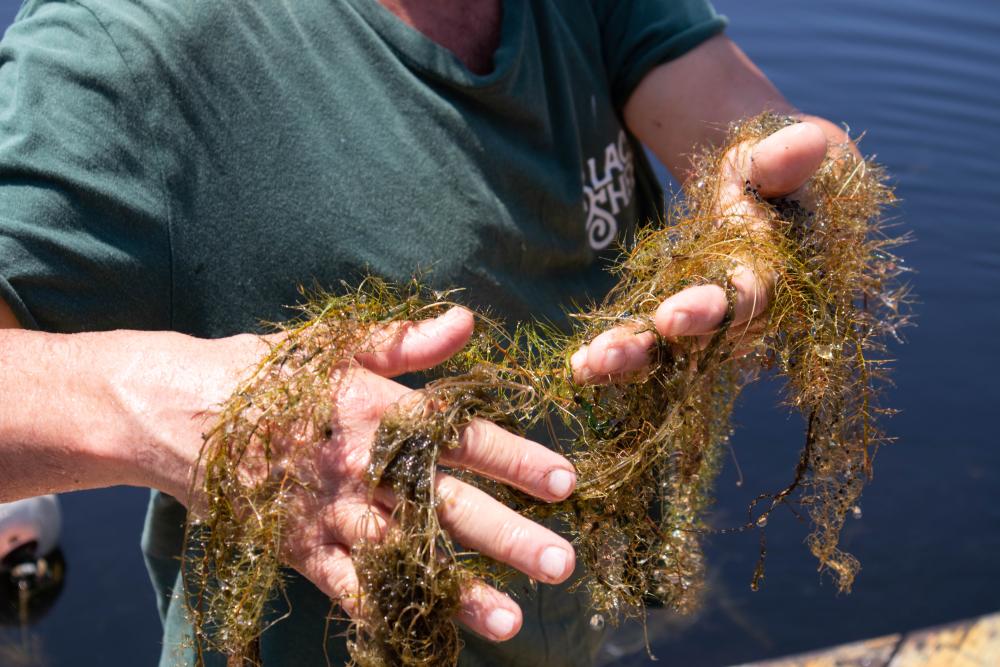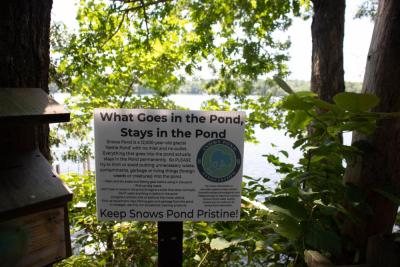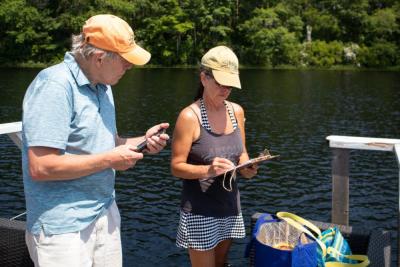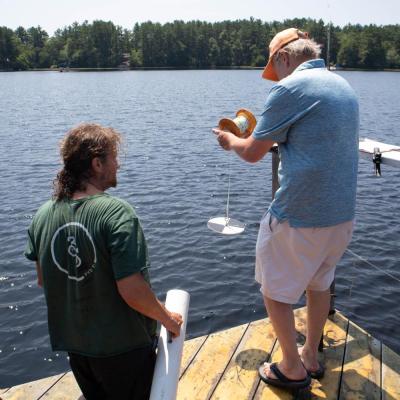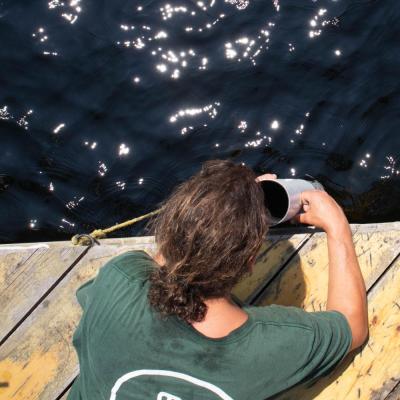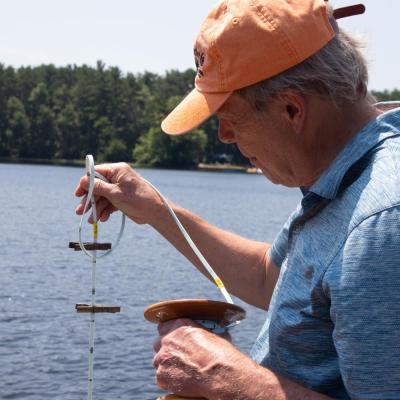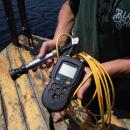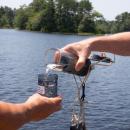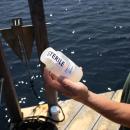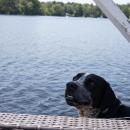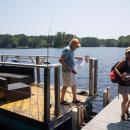Getting in the weeds to keep Snow’s Pond pristine
ROCHESTER — It was 86 degrees on Saturday, July 8 but 16 feet below the surface of Snow’s Pond in Rochester it was a cool 60 degrees.
Andy Hammerman pulled a dissolved oxygen meter and thermometer up from the muddy depths and onto the deck of a makeshift pontoon boat while Ken Josephson recorded the data on a clipboard.
The two are members of the Snow’s Pond Association, a group founded in 2018 that works to protect the health of Snow’s Pond and other bodies of water in Rochester. Each month, members of the group collect water samples and record readings from different parts of the pond to send to a laboratory at the University of Rhode Island.
Tacked onto the boat’s railing was a placard that read: “What goes in the pond stays in the pond … keep Snow’s Pond pristine.”
According to Snow’s Pond Association founder Michelle Kirby, who prepared sterile containers to collect water samples, the pond is a 12,000-year-old “kettle pond.” This means it was formed by a glacier with no streams that feed in or out.
Kirby, a Rochester native, now lives on the shores of Snow’s Pond in the summer.
“I grew up coming to Snow’s Pond and many of the residents that live here have noticed a change over the years,” said Kirby. “[The water has] gotten less clear … so we created the association” made up of the pond’s abutters.
Kirby attributes some of these changes — including mats of floating weeds — to climate change, land development and human impact.
“Everything's warmer than it used to be … the winters are less cold, we're not getting the heavy freezes that we used to always get,” she said. “The whole ecology of it is changing — everything changes and nothing's going to be the same, and I'm sure everything has natural cycles as well — but for sure, there's the human impact.”
On Saturday, the dissolved oxygen was within usual levels — 20.3 parts per million at five meters below the surface, said Hammerman, noting that “none of these numbers are bad.”
Dissolved oxygen is a measure of how much oxygen is available to aquatic life. Low levels of dissolved oxygen can create “dead zones” where nothing can live, said Hammerman.
The device is the property of the Mattapoisett River Valley Water District Commission, but is used by the Snow’s Pond Association.
“If you don’t have [a dissolved oxygen meter], to get a dissolved oxygen reading is very complicated,” said Hammerman.
Association members also took water clarity readings using a “Secchi disk,” a black and white disk that is lowered into the water until it is no longer visible.
The group took measurements at the deepest point of the pond and at an inlet they call “Cranberry Cove” because of its proximity to a private cranberry bog.
To reach Cranberry Cove, the boat traveled through masses of floating weeds. The plants caught on the boat and tangled with scientific equipment.
“The association formed mostly because people were so frustrated with this,” said Hammerman, holding a handful of weeds.
“We never had the weeds before,” said Kirby.
After all the measurements were obtained and recorded, the boat returned to shore where Hammerman and Kirby worked to separate chlorophyll, a pigment in plants that helps with photosynthesis, from water samples while Josephson entered data into a computer.
According to Kirby, the water in Snow’s Pond is relatively clean, and the goal is “keeping it that way and figuring out what’s going on before it gets worse.”
When the time comes to act, she added, “we’ll have the data we need for [scientists] to make the right decisions.”
Association members went through training to learn the proper way to monitor, collect and analyze data, but it’s still “fun,” said Hammerman.
“We’re doing it for fun, meaning that we love and enjoy the pond,” said Hammerman.
Kirby added that since forming the association, she and her neighbors have “gotten to be really good buddies … we're [all] on the same page as far as how important [the pond] is. It's been a good bonding experience for everyone who's involved.”



